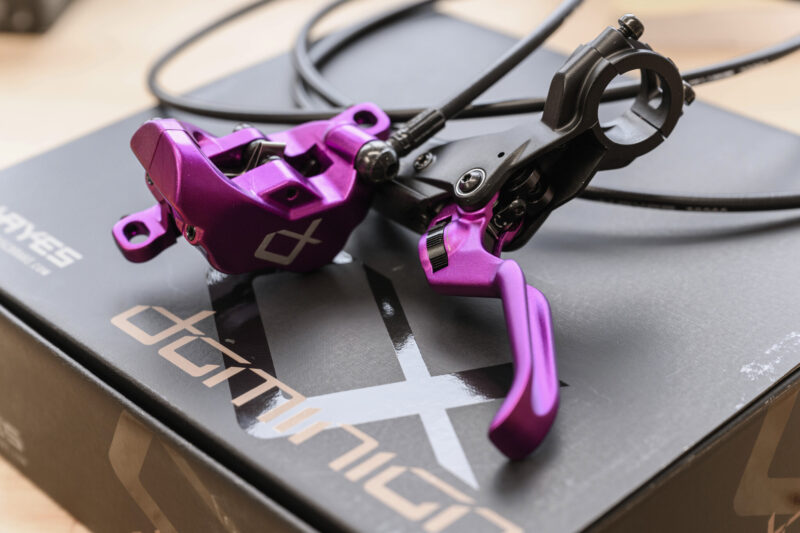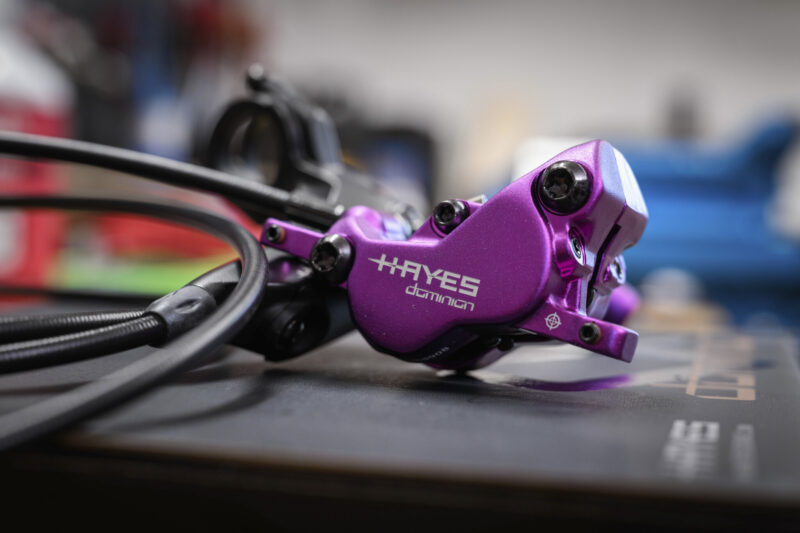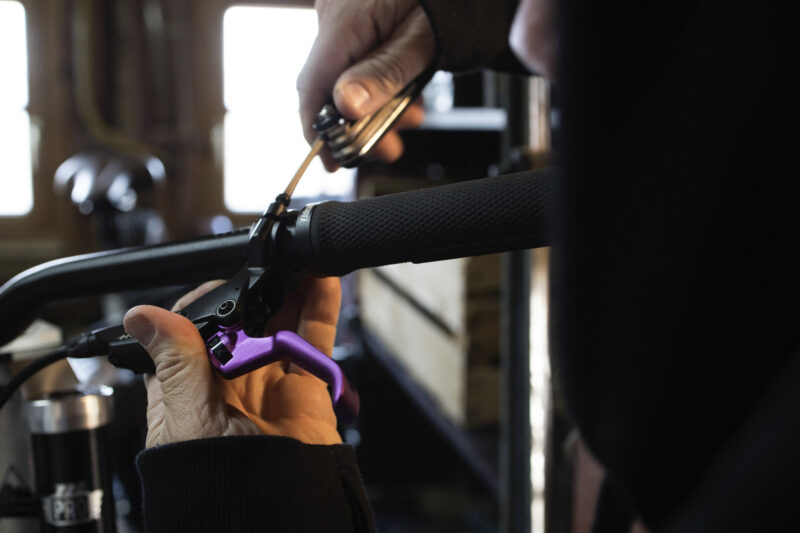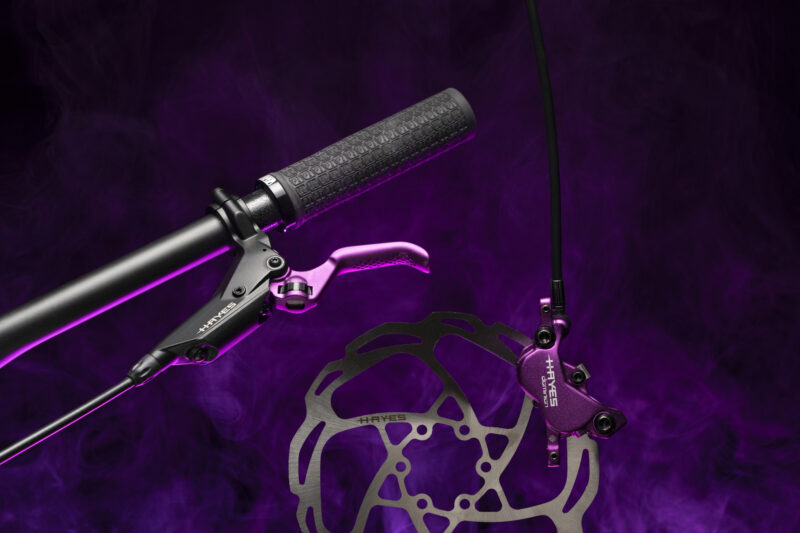AASQ: What is the Best Bike Upgrade for the Least Amount of Money?
The tinkerers and weight weenies that scour the internet for the latest tech to shave off a few grams or conserve a couple of watts know that there is no shortage of upgrades that can bring marginal gains to their ride.

Weight-saving upgrades come at a price, and that price increases exponentially as cyclists refine their equipment to make their bikes as fast, light, and efficient as possible. Saving just a couple of grams can cost hundreds and hundreds of dollars – have you looked at any Titanium, high-end carbon, or electronic components lately? They’re not exactly cheap.
In this economy, more riders may find themselves pinching pennies while still hoping to find an affordable upgrade that will take their riding to the next level.
According to Hayes Bicycle Components, dollar for dollar, that upgrade is brakes.
Why should you upgrade brakes?
Sure, a shiny-new electronic drivetrain will make a bike more efficient and carbon wheels will change the feel of the road or trail considerably, but new brakes can make riders feel incredibly well connected to a bike and confident to push themselves to the next level.

It’s difficult to ride confidently if you don’t trust your stopping power. Sadly, many brakes that come on new bikes, especially on the entry-level side of things, tend to be a little underpowered. Now, that doesn’t mean they don’t work, but they’re often not as responsive as some of the other options out there.
Brakes are an upgrade that all levels of riders can appreciate. While certain creature comforts and technologies may be more valued by high-level riders, reliable and powerful brakes provide real benefits to riders of all levels – from the newer untrained riders all the way up to World Cup champions. Poorly functioning brakes aren’t just a safety risk; they can also be a huge nuisance. Constant bleeding, unreliable performance, and low power are a few pitfalls that can completely ruin the riding experience for the novice and the pro alike. Better brakes can completely change the experience in the saddle.
Instead of racking up a few thousand dollars in carbon or electronic upgrades, most brake systems will only set a rider back a few hundred bucks, so if you’re looking for the best dollar-for-dollar upgrade to your ride, look no further.
What makes a good brake system?
Stopping power is the most important aspect of brakes, and there’s a lot that goes into it. Since most riders weigh between 100 – 250 pounds, there is a tremendous amount of force required to slow that momentum down.

Hayes Bicycle Components has been manufacturing high-end brake systems since the late 1990s, slowly refining its designs over more than two decades to create a product that does exactly what it is supposed to do: stop.
Hayes’ latest range of the Dominion family of brakes, including the A4, T4, T2, and A2, provides a great snapshot of the impact new brakes can have on a ride. The Dominion A4, which has long been a staple of the brand, uses a motorsports-inspired two-stroke dual-port bleed system, along with a hydraulic system that works consistently in a wide variety of temperatures and conditions. Whether you’re in the heat of the desert or the cold of the mountains, your brakes will function as expected.
The T4 and T2 models include titanium hardware and carbon-fiber levers to keep weight at a bare minimum. The A2, the newest offering in the lineup, also includes a compact two-piston caliper designed for XC and trail riders.
The Dominion line features a master cylinder that is fine-tuned to eliminate the dead space riders can feel from when they first squeeze the brake lever to when the brake pads actually clamp down on the caliper. This means riders will feel an immediate response, a powerful bite without hesitation, and modulation all through the way through the stroke.
Fit and feel
While the stopping power is the most critical element of any brake system, it’s important to remember that brakes are also a vital contact and interface point on the bike. The ergonomic qualities and handlebar position of brake levers and how a rider engages them can lead to fatigue, pain, or even injury. They also can prevent it.

For brakes with less power, riders often have to use multiple fingers, or all of them, to squeeze as hard as they can to come to a stop. This is especially true on downhill courses. The Hayes Dominion line comes with an ergonomic finger lever that doesn’t require extreme levels of force. It also comes with an optional Short Reach Lever that brings the lever closer to the bar for easy single-finger braking for riders with smaller hands. Its design also enables riders to adjust the reach of the lever with no tools for quick, no-hassle tuning even while on the trail.
Considering the amount of time folks spend interacting with their brake levers, they really need to be well-designed to ensure they remain comfortable and easy to use, even during long rides.
Style
Aside from the aforementioned performance improvements a new set of brakes can bring to a bike, they also can bring a touch of flare that can take a bike from something that looks like it came off of a shelf to a custom build. The Dominion A4 brake comes in a handful of colors including Bronze, Stealth Black / Grey, and an eye-popping limited edition Purple Hayes.

Hayes Brakes are a component that checks all of the boxes of performance, fit, and style all in one package.
The Hayes Dominion line sells for an MSRP ranging from $250 to $350, making it one of the places to look for riders aiming to get the most bang for their buck when upgrading their ride. Even after adding new rotors, a complete set could still come in well under $1,000 and completely revamp the feeling of any bike.
The post AASQ: What is the Best Bike Upgrade for the Least Amount of Money? appeared first on Bikerumor.
